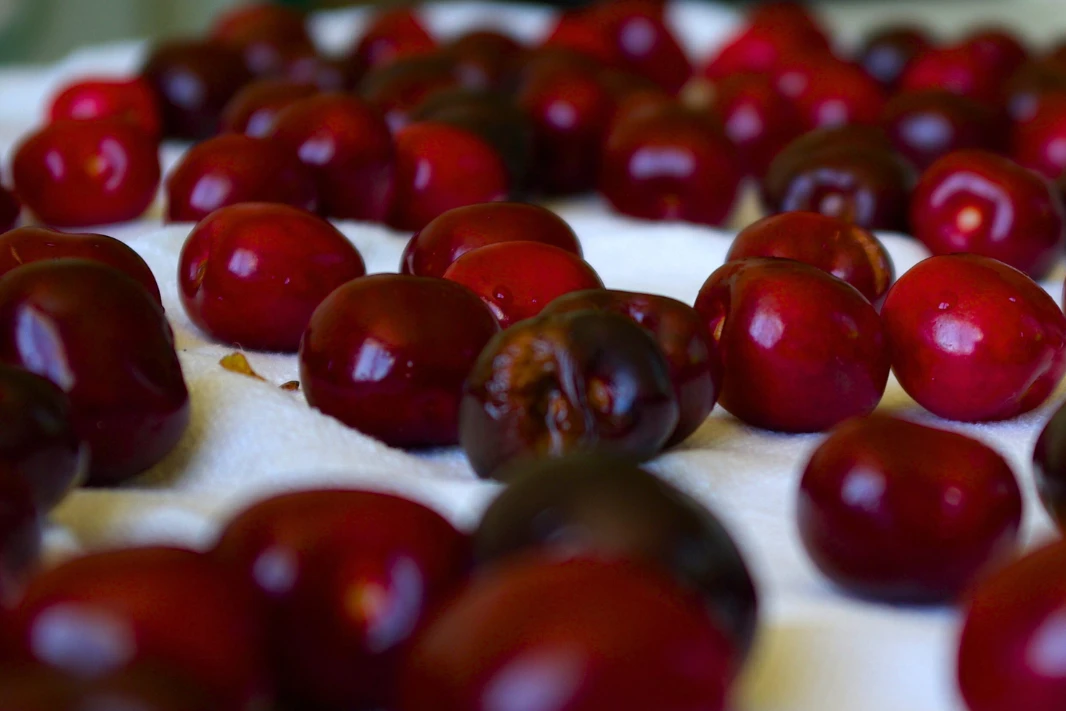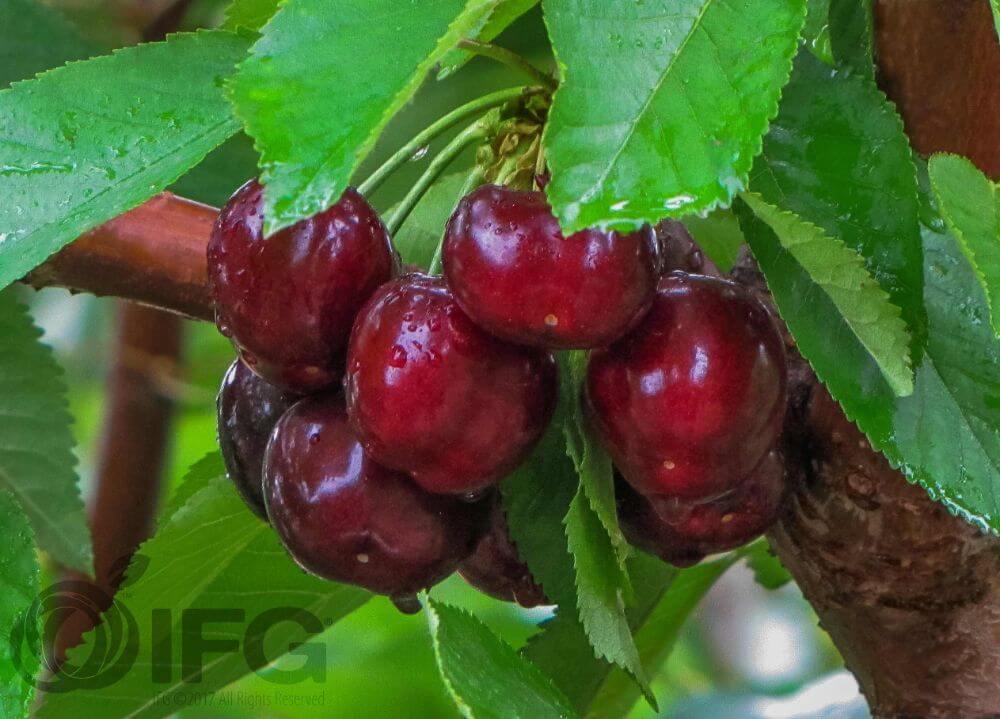Once solely the stuff of science, electrostatic pollen application has become a mainstay for Northwest cherry growers looking to boost the work of their bees.
“When the bees are out, we spray,” said Victor Bueno-Acuña, orchard manager for Washington Fruit Growers’ orchards near Plymouth, Washington, along the state’s southern border.
Bueno-Acuña and other growers say liquid pollen sprays improve cherry yields over insect pollinators alone, especially for varieties that don’t typically set well, such as Tieton and Coral Champagne. Firman Pollen Co., the Yakima, Washington, pollen vendor, said electrostatic spraying has grown to two-thirds of its business as the company serves cherries in Washington and almonds in California.
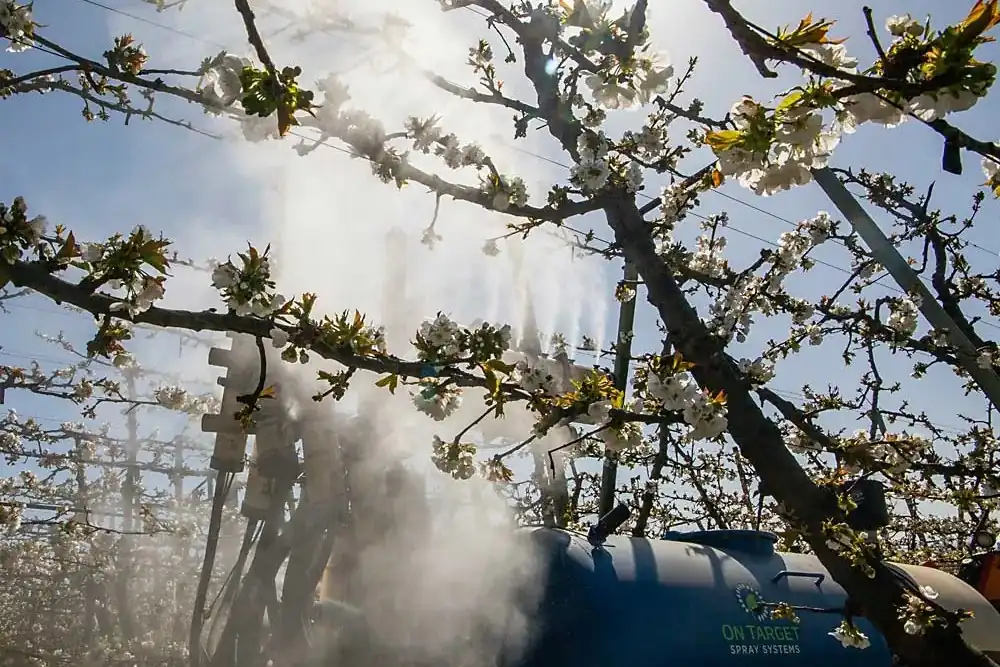 Image 1. A pollen suspension deluges Tieton cherry blooms in early April at a Washington Fruit Growers orchard near Plymouth, Washington. Once the stuff of research ambitions, electrostatic pollen application has become a mainstay for growers who want to give their bees a boost.
Image 1. A pollen suspension deluges Tieton cherry blooms in early April at a Washington Fruit Growers orchard near Plymouth, Washington. Once the stuff of research ambitions, electrostatic pollen application has become a mainstay for growers who want to give their bees a boost.
Adoption and results
“It’s probably the most common way we’re applying pollen, especially to cherries,” said Ryan Reisbick, CEO of Firman.
Dry pollen must be mixed with a proprietary sugar and nutrient blend in water before it can be applied with electrostatic emitters that create a charge, helping pollen stick to blooms even if they face away from the sprayer. Best practices call for two applications around 40 percent and 80 percent bloom.
Because orchards are busy places, Bueno-Acuña only made one application this year, he said. Like everything else, spraying pollen is dependent on weather, equipment, labor and a host of other factors.
However, Bueno-Acuña believes it works. He has used the liquid pollen suspension in blocks without enough pollinizer trees, and the spray helped them catch up to the blocks with adequate pollinizers, he said.
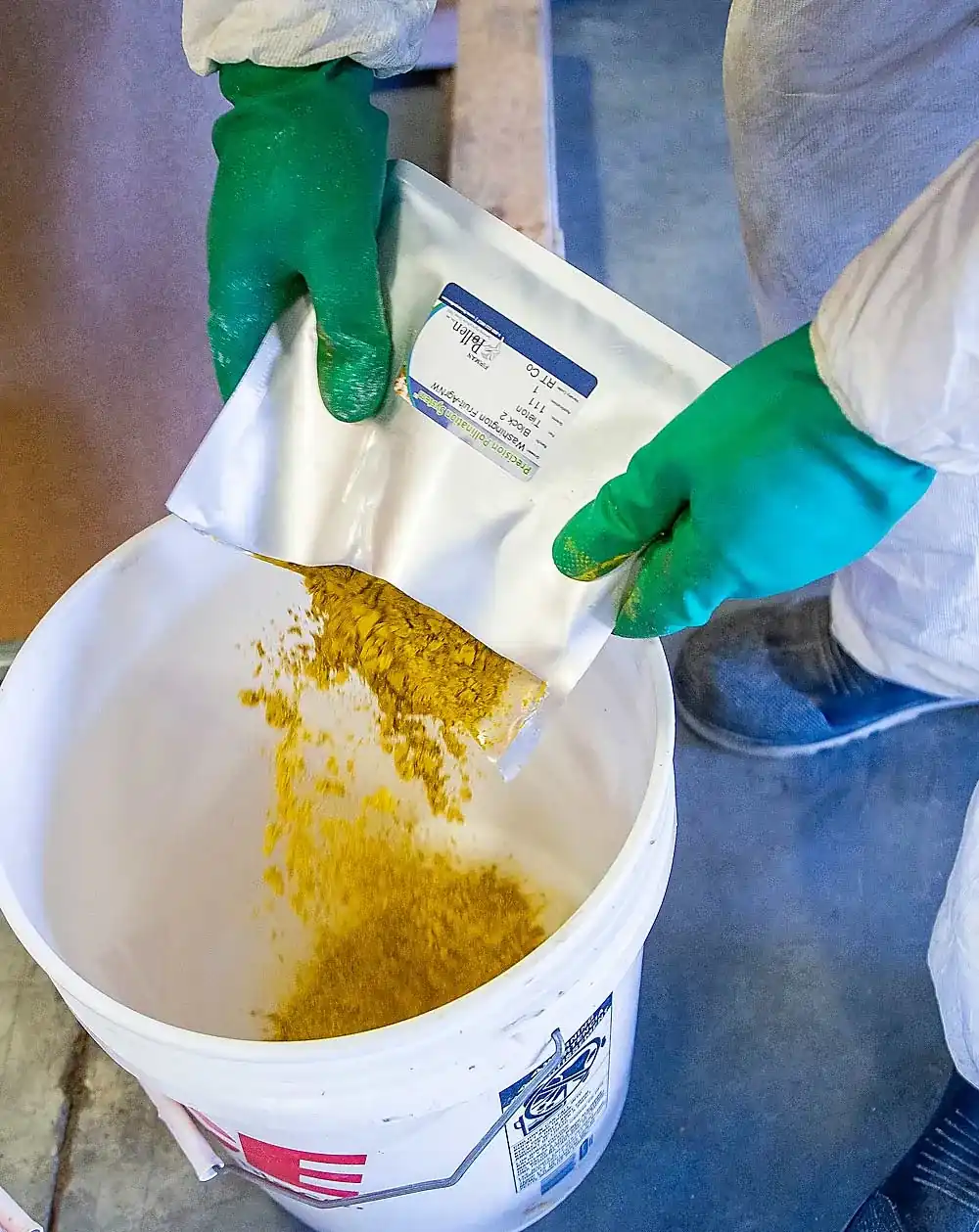 Image 2. Jose Bueno mixes dry pollen with sugar to prepare it for application.
Image 2. Jose Bueno mixes dry pollen with sugar to prepare it for application.
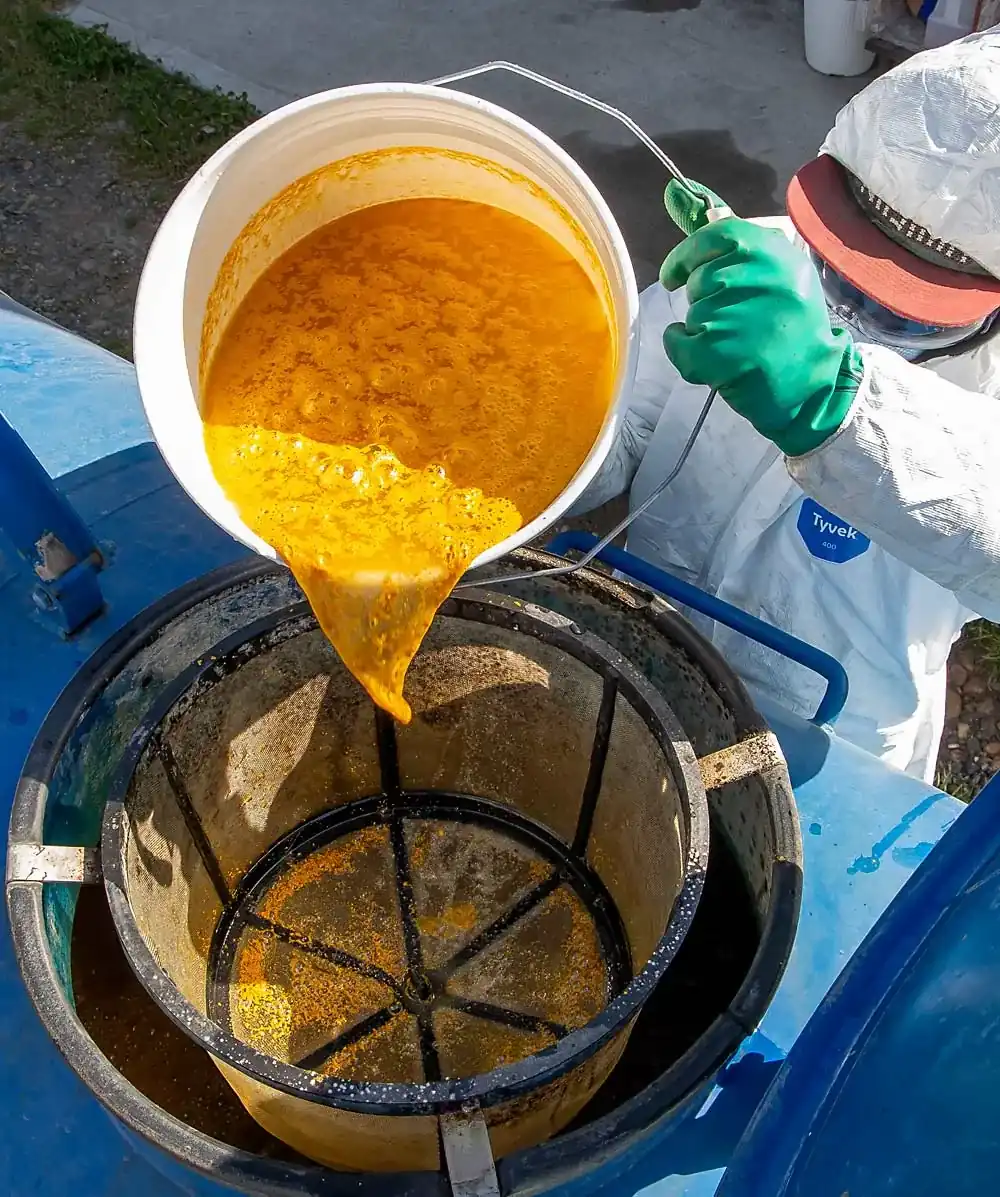 Image 3. Jose Bueno pours freshly mixed pollen slurry into a sprayer tank. Dry pollen lasts years in a freezer, but once mixed with sugar and water, it must be applied within 90 minutes.
Image 3. Jose Bueno pours freshly mixed pollen slurry into a sprayer tank. Dry pollen lasts years in a freezer, but once mixed with sugar and water, it must be applied within 90 minutes.
Effectiveness and weather
Pollen, whether from a sprayer or carried by a bee, works best in warm, sunny, still weather, but electrostatic sprays boost fruit set even in imperfect conditions, said Ramon Cuevas, manager of Washington Fruit’s Zillah, Washington, orchards.
Cuevas has applied electrostatic pollen on Tieton and Coral Champagne cherries for at least three years, improving yields by between a half ton to 1 ton per acre (0.45 to 0.9 metric tons per acre).
“On a good year, that pays for itself pretty easily,” Cuevas said. Shawn Gay of Finley Cherries near Kennewick, Washington, uses electrostatic pollen applications on almost every variety, to make yields more consistent year to year, he said.
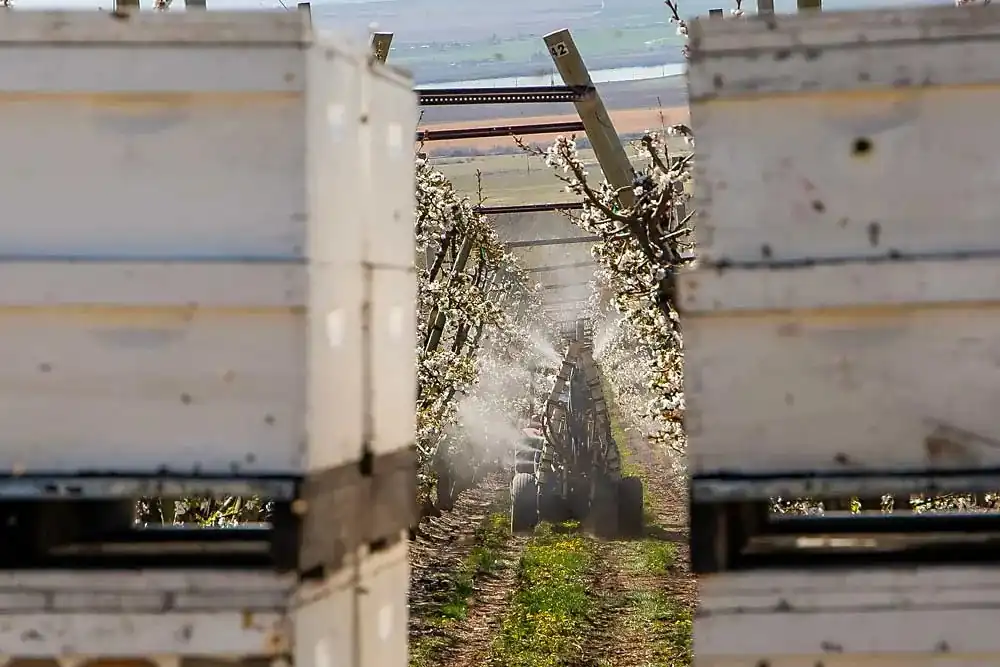 Image 4. Bueno pilots an OnTarget electrostatic sprayer down a row of Tieton cherries.
Image 4. Bueno pilots an OnTarget electrostatic sprayer down a row of Tieton cherries.
Trials and future vision
Gay was an early adopter of Firman’s electrostatic pollination, participating in some of the first commercial trials in 2017 with the company and Matt Whiting, a Washington State University tree fruit physiologist at the Irrigated Agriculture Research and Extension Center near Prosser. Gay liked the results and has stuck with it.
It’s been years since any Washington trials have been run, because growers have already adopted the pollination method commercially, Whiting said. But in more recent California experiments, cherry yields improved by 23 percent in Bing and 27 percent in Coral Champagne with an electrostatic pollen boost to fruit set.
Growers use the pollen slurry as a supplement now, but Whiting still envisions the suspension someday replacing bees.
“That remains the vision, absolutely,” he said.
In fact, he has pollinator exclusion trials underway in apples this spring, using a robotic pollen applicator under development by WSU engineers. Firman has done five such apple trials, achieving adequate fruit set every time, Reisbick said.
Washington Fruit has yet to try pollinating without bees, Cuevas said. Growers only get one chance at pollination per year and don’t like to take chances with it.
“We have not gotten the guts to do it yet,” Cuevas said.
Source images: Ross Courtney, Good Fruit Grower
Ross Courtney
Good Fruit Grower
Cherry Times - All rights reserved








